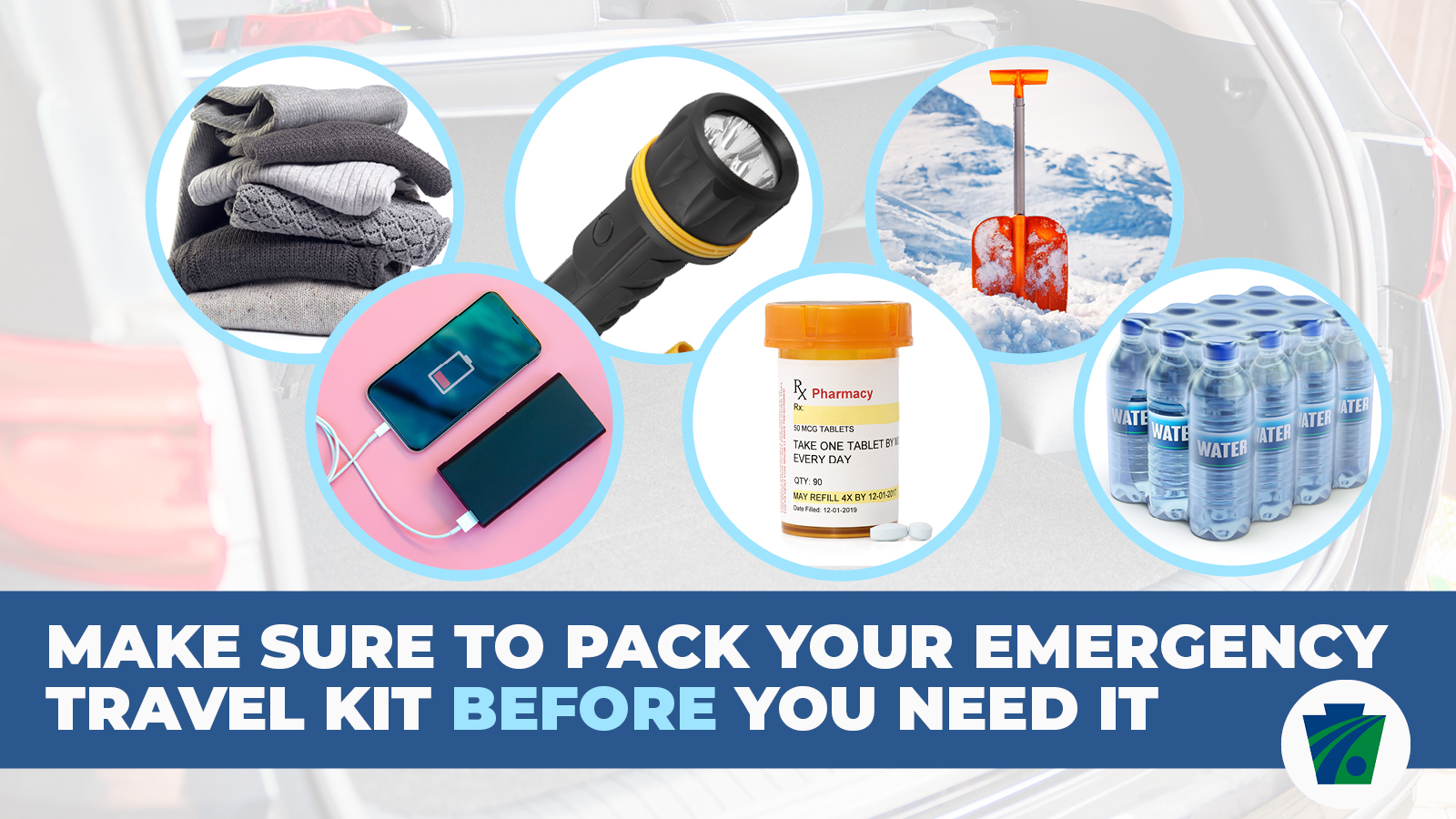To emphasize safe driving through the winter season, PennDOT's Winter Driving Awareness Week will be observed Jan. 21-27, 2024. To help you regain your confidence on snow-covered roads, or simply as a refresher for what you already know, here are some frequently asked questions on winter driving safety.
First and foremost, if you encounter snow or ice-covered roads, slow down and increase your following distance. Last winter in Pennsylvania, preliminary data shows there were 135 crashes resulting in one fatality and 61 injuries on snowy, slushy, or ice-covered roadways where aggressive-driving behaviors were factors.
HOW CAN I CHECK MY VEHICLE BEFORE WINTER WEATHER HITS TO MAKE SURE IT'S READY?
A well-maintained vehicle could be the difference between avoiding a crash or skidding off the road. Motorists should regularly check to ensure that:
- Fluid levels are full.
- Your wipers don't streak.
- Your heater and defroster are working properly.
- Your vehicle's radio is working so you can receive weather and traffic reports.
- All lights are working.
- Tires are properly inflated and have sufficient tread depth.
Additionally, if you live in an area prone to heavy snow, you may want to use dedicated snow tires or carry a set of tire chains. You should also have a mechanic check the brakes, battery, hoses, and belts.
WHAT SHOULD I INCLUDE IN A WINTER EMERGENCY TRAVEL KIT?

In case you do get stranded in cold weather, you should have an emergency travel kit packed in your vehicle. It should include:
- A flashlight and extra batteries
- Battery-operated radio
- Jumper cables
- Cellphone and charger
- Small snow shovel
- Matches and candles
- First-aid supplies
- Extra warm clothing and gloves
- Blanket
- Ice scraper
- Sand or kitty litter
- Bottled water
- Non-perishable food
- Anything else you may need to accommodate family traveling with you (special medication, baby supplies, pet food, etc.)
WHERE CAN I GO TO FIND OUT WHAT MY ROADS ARE LIKE DURING A STORM?

PennDOT encourages the use of
511PA.com to check the roads before you leave. On the site, motorists can check conditions on more than 40,000 roadway miles, including color-coded winter conditions on 2,900 miles. 511PA is free and available 24 hours a day. It also provides traffic delay warnings, weather forecasts, traffic speed information, and access to more than 1,000 traffic cameras.
During a storm, users also can check 511PA to
track snow plows and see when their local roads were last plowed. Additionally, you can now check travel alerts along a specific route using the "Check My Route" tool.
DO I HAVE TO REMOVE ALL THE SNOW AND ICE FROM MY VEHICLE?
Yes. It is
illegal to drive with snow and ice obstructing your vision through the front, side, or rear windows.
Pennsylvania law also requires drivers to remove accumulated ice or snow from their vehicle, including the hood, trunk, and roof within 24 hours after the storm has ended. This applies to all vehicles, including commercial vehicles. Drivers in violation of the law are subject to a fine of $50.
Additionally, if snow or ice dislodges or falls from a moving vehicle and strikes another vehicle or pedestrian causing serious bodily injury or death, the driver faces a fine of up to $1,500.
CAN I LEAVE MY CAR UNATTENDED WHILE IT WARMS UP IN THE DRIVEWAY?
As long as your car is on private property – like your driveway – you may leave it unattended while it warms up. However, in Pennsylvania, it is
illegal to leave a running car unattended while on public property.
WHAT SHOULD I DO IF I ENCOUNTER A SNOW PLOW ON THE ROAD?
PennDOT's plow drivers are the true heroes of a storm. They are out on the roads for countless hours trying to keep them safe and passable. If you come across a plow truck, please keep in mind the following:
- Stay at least six car lengths behind an operating plow truck.
- Be alert since plow trucks generally travel much slower than other traffic.
- If a plow truck is traveling toward you, move as far away from the center of the road as is safely possible.
- Remember that snow can obscure the actual snow plow width, which is wider than the truck.
- Never try to pass or get between several trucks plowing side by side in a "plow train."
- Never travel next to a plow truck since there are blind spots where they operator can't see.
- Keep your lights on to help the operator better see your vehicle. And remember, it's that law that if your wipers are on, your headlights must be on.
WHAT SHOULD I DO IF I BECOME STRANDED IN THE SNOW?
Before you drive during a winter storm, make sure someone else knows where you are going and when you expect to arrive. In case you run into an emergency and need help, someone will know where to look for you.
If you have a working cellphone, call 911 immediately to get assistance. It's better to stay with your vehicle until help arrives. Run the engine every hour or so, but make sure the tailpipe is clear and keep the downwind window cracked open.
For more information on safe winter travel, an emergency kit checklist, and information on PennDOT's winter operations including a video, visit
www.PennDOT.pa.gov/winter. Additional winter driving and other highway safety information is available at
www.PennDOT.pa.gov/safety.
Follow the conversation by using
#PAWinter on X and like the department on
Facebook.